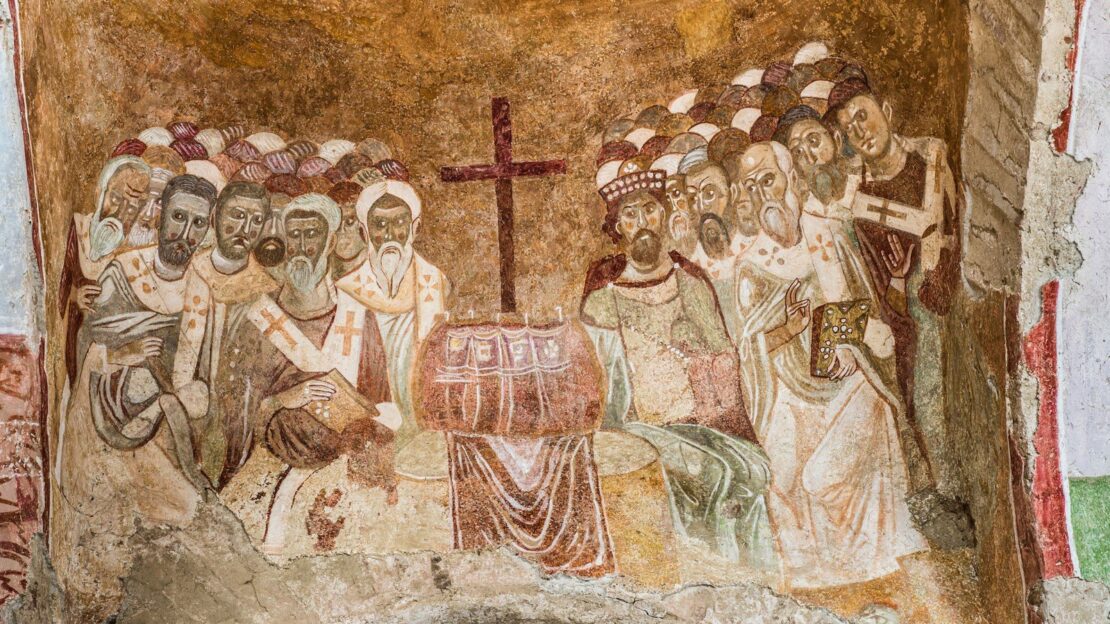The recitation of the Creed is part of the Liturgy of the Word on Sundays and the greater Feast days.
There are two creeds that are used during Mass: the Apostles’ Creed and the Nicene Creed. The Apostles’ Creed is based on the baptismal creed used in the Church of Rome from early centuries. The Nicene Creed has its origin in the Council of Nicaea (325AD) and the First Council of Constantinople (381).
These two Creeds are also often called the Symbols of Faith. This term goes back to the basic meaning of symbol, which is to draw together. These formulations of the faith were seen as drawing believers together, or as expressing the proper faith of the Church in which Christians could recognise their own faith. Thus they had the function of uniting the community. This became especially important at times when false or inaccurate understandings of the faith were widespread.
The Apostles’ Creed is especially associated with baptism and so is recommended particularly for times of importance for those becoming Christians (catechumens) or for times of renewal of baptismal promises – Lent and Easter are such times. This creed was not traditionally used at Mass.
The use of the Nicene Creed at Mass has something of a different history. It was used in the Eastern Churches from the 5th century on and in those liturgies it was recited either during the Liturgy of the Word or as preparation for communion. It appeared in Spain in the 6th century and spread to the rest of Northern Europe (which did not use the Roman Rite at that time) over the following centuries.
It only came into the Roman Liturgy from 1014. The Emperor Henry II arrived in Rome and was keen to bring about needed reforms in that city. One of the things he noticed was that the Creed was not recited during Mass and ordered that it should be, since that was what he was used to in Northern Europe. Pope Benedict VII thereby included in the Roman Mass. And so since then it has been part of the Roman Liturgy of the Mass.
By Fr Frank O’Loughlin
Main Image: Council of Nicaea in 325, depicted in a Byzantine fresco in the Basilica of St. Nicholas in modern Demre, Turkey.




Comments
Trish Anthony
Father Frank
I have have great belief in the importance of the both creeds, but preference for the Apostles’ Creed. It is a lovely way to start the mass no matter what time of the year or occasion.
Bernadette Potter
Thanks you Fr Frank for the brief history of both Creeds. The history of the Nicene creed is interesting from the perspective of the influence of the Emperor of the day on the Pope and still remains today. For the ‘ordinary’ church attendee the NC is quite complex.
the Nicene creed
Add Comment